GSMArena smartphone buyer's guide: November 2014
November 2014
€100-€200
In the €100-€200 category we were overwhelmed with choice of new brands and models that might be hard to find in retail stores. If you're okay with doing some Internet shopping you can grab one of those, but established brands have some heavy hitters in here too.
As an example of a great deal you can find on the net, the Huawei Honor 3C Play is barely more expensive than the Galaxy Ace Style, but promises some really impressive specs. It has a MediaTek chipset and runs Android 4.2 Jelly Bean - as many affordable, MT-powered phones do, it's a common disadvantage to look out for.
Still, you get a dual-SIM phone with a 5" 720p screen and a quad-core processor with 1GB of RAM, plus 16GB of built-in storage. It has an 8MP camera and a 2,000mAh battery to boot. Finding an Honor 3C Play in brick-and-mortar stores can be quite a challenge though.
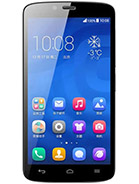 Huawei Honor 3C Play |
Pros | Cons |
|
|
|
Phones like the Honor 3C Play are of a pie-in-the-sky deal, and a more grounded option is something like the HTC Desire 310. It boasts the same chipset, though in some regions it only comes with 512MB RAM) and the problem of the older Android version comes up again.
Besides HTC's familiar design, there's a 5MP/1080p camera, a front-facing camera too. The screen is decent (4.5" FWVGA) and there's a 2,000mAh battery. There's a dual-SIM version of the Desire 310.
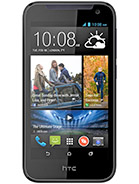 HTC Desire 310 |
Pros | Cons |
|
|
|
While Android is technically open source, a large portion of the experience comes from proprietary Google services. Mozilla is on a mission to create cheap, open smartphones to give people in developing countries access to the Internet. While there are €30 devices out there already, they are hardly usable as smartphones.
However, you can get on the Google/Microsoft/Apple escape train with something like the Alcatel Fire E. It's not the cheapest, but it's fairly competitive compared to similarly-priced Androids (which is not usually the case).
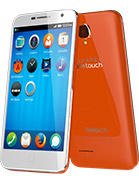 Alcatel Fire E |
Pros | Cons |
|
|
|
Xiaomi has been enjoying an amazing exponential growth recently and has already overtaken ailing mobile phone giants like Sony. The ambitious company is taking steps to expand its availability and recently entered the Indian market. It's also making its way to Europe - most often through unauthorized resellers who sometimes are selling the Chinese versions of the phones, which lack Google's service integration. Despite that fact, Xiaomi phone in Europe are still a good deal and we suspect their sales they will continue to enjoy a healthy growth.
The Xiaomi Redmi 1S (aka Hongmi 1S) is enjoying great popularity among our readers and it trumps the HTC Desire 310 on several fronts - it's dual-SIM by default, it has a bigger, sharper 4.7' 720p screen (IPS too!), plus a faster Snapdragon 400 chipset and an 8MP/1080p camera. It's still a Jelly Bean device, but Xiaomi has been promising a KitKat update for a while now.
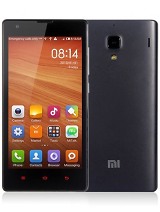 Xiaomi Redmi 1S |
Pros | Cons |
|
||
As another viable alternative to the Desire 310, you can check out the Nokia Lumia 630 Dual SIM. It features a 4.5" IPS display with FWVGA resolution and Nokia ClearBlack tech. It has a quad-core processor and the latest Windows Phone 8.1 (with free offline navigation), though the video capture is capped at 720p.
 Nokia Lumia 630 Dual SIM |
Pros | Cons |
|
|
|
| Review | ||
The Motorola Moto E has single and dual-SIM versions and as part of Moto's lineup has a ticket for early software updates (it's headed to Lollipop as we speak). It's not quite as capable as the HTC Desire 310 - it only has a dual-core processor and its camera is sub-HD (480p), but some would still go for it just to get pure, recent Android.
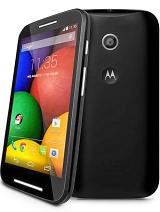 Motorola Moto E |
Pros | Cons |
|
|
|
| Review | ||
The first Microsoft-branded Windows Phone handset is a reality, the Microsoft Lumia 535. The phone is an improvement over both the Lumia 530 and the Lumia 630 with a big 5" screen and 5MP selfie camera, matching the 5MP main camera. It uses the same quad-core processor but has 1GB of RAM. The phone is currently on pre-order, but units should ship in early December.
There's a dual-SIM version too and it's definitely worth the little extra cash over the Lumia 630, which doesn't even have a front facing cam, unless size is a concern, of course. Do check out the older Lumia 625 first - it has LTE connectivity and its main camera can record 1080p video and it has LTE. Its screen isn't quite as good as the 535's and it only has 512MB of RAM, but it should drop in price as the Lumia 535 arrives.
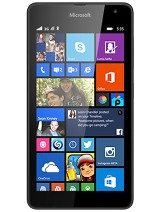 Microsoft Lumia 535 |
Pros | Cons |
|
||
Huawei returns with another great but hard-to-find offering - the Ascend Y550. It's one of the cheapest phones with LTE and one of the cheapest phones with a 64-bit processor (it's a Snapdragon 410 chipset). The Cortex-A53 cores inside are the next-generation replacement of the Cortex-A7s found in most cheap quad-cores, plus the chipset brings the updated Adreno 306. The new GPU offers the same performance as the 305, but uses less power.
The Ascend Y550 currently runs Android 4.4 KitKat, but should it get updated to Lollipop, it will see alleged speed enhancements related to its 64-bit nature, which would remain out of reach even for some current flagships. The screen on the Ascend Y550 isn't as impressive as that of the Honor 3C Play though.
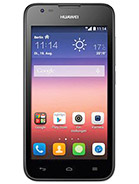 Huawei Ascend Y550 |
Pros | Cons |
|
||
While 720p screens are available in the €200 price range, most devices make do with qHD or less. The LG G2 mini fits a 4.7" IPS display with qHD resolution in a fairly compact body. Like the big G2, this phone uses the trademark button arrangement on the back.
The phone packs a Snapdragon 400 chipset, running Android 4.4 KitKat, LTE connectivity, an 8MP/1080p camera and a relatively big battery in its smallish dimensions. The LG G3 was updated to get Lollipop before certain Nexus devices, so LG G2 mini's update future is looking good.
Note that there are some regional variations with dual-SIM (and no LTE) or with a Tegra 3 chipset.
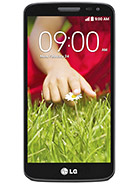 LG G2 mini |
Pros | Cons |
|
|
|
The HTC Desire 510 isn't as compact as the G2 mini and the still camera goes down to 5MP, but in Europe it comes with the new Snapdragon 410 chipset, same as the Ascend Y550. It's pricier than the Huawei, but it records 1080p video with the main camera and you get other perks like double the storage (8GB), NFC (region-dependent) and HTC's brand familiarity and design.
Note that in the US the Desire 510 is based on Snapdragon 400, so there you'd be better off with the more compact LG G2 mini.
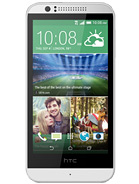 HTC Desire 510 |
Pros | Cons |
|
|
|
From a mini to a phablet - the Xiaomi Redmi Note 4G stretches the Redmi 1S to a 5.5" 720p screen and adds LTE connectivity plus Wi-Fi 802.11ac. It has a slightly better 13MP/1080p camera and is powered by the same Snapdragon 400 chipset, but with 2GB of RAM. There are non-LTE versions with octa-core MediaTek chipsets too.
 Xiaomi Redmi Note 4G |
Pros | Cons |
|
||
At the upper end of the €100-€200 segment are to Moto G's - the Motorola Moto G (2014) and the Moto G 4G. The new model has a 5" 720p screen surrounded by stereo speakers and is quickly getting updated to Android 5.0 Lollipop. It has a slightly better camera than its predecessor - 8MP/720p - but the same Snapdragon 400 chipset.
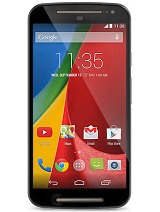 Motorola Moto G (2014) |
Pros | Cons |
|
|
|
| Review | ||
The older Moto G 4G is smaller with a 4.5" 720p screen and while it may lack the stereo speakers, it has LTE connectivity. Both the Moto G (2014) and Moto G 4G have microSD card slots (the original G did not). This one is on KitKat currently and will be getting Android 5.0 Lollipop later on as well.
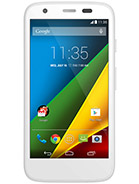 Motorola Moto G 4G |
Pros | Cons |
|
||
| Review | ||
If you want an alternative to the dual-SIM version of the Moto G (2014), you can check out the Asus Zenfone 5. It packs a 5" 720p screen and an 8MP/1080p camera. Regional differences can be quite big though - it has either a 1.6GHz or 2GHz processor (a dual-core Intel Atom in both versions) and 1GB or 2GB of RAM. Pricing also varies quite a bit by region so you'll need to do a bit of research before deciding in favor of the Zenfone 5 or the Moto G (2014).
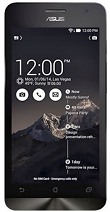 Asus Zenfone 5 |
Pros | Cons |
|
|
|
| Review | ||
Reader comments
- AnonD-165192
- 27 Jan 2015
- 4DL
The Lumia 830 is a better value than the 930 . Four reasons : 1) it`s about $45 cheaper ;2) it has a micro SD slot that takes up to 128gb , this is an unforgiveable omission on the Icon l 3) brighter screen with better sunlight performance and 4 ) re...
- MANJIT
- 18 Jan 2015
- Hkt
lenovo arena k3 best prise best fitures smart yellow calour
- AnonD-7811
- 15 Jan 2015
- H5D
I think they should add older phones too. You can buy a good condition HTC Sensation or galaxy s2 for under £100 if you know where to look, Dual core 1.2GHz, 1GB ram. 8MP camera etc, pretty good considered the specs